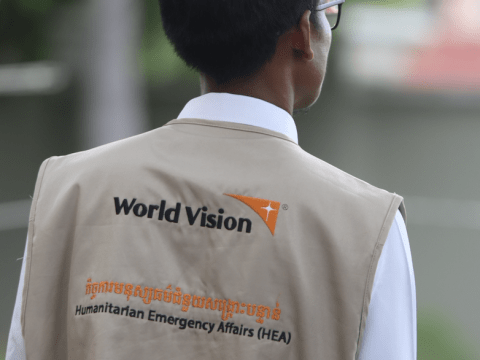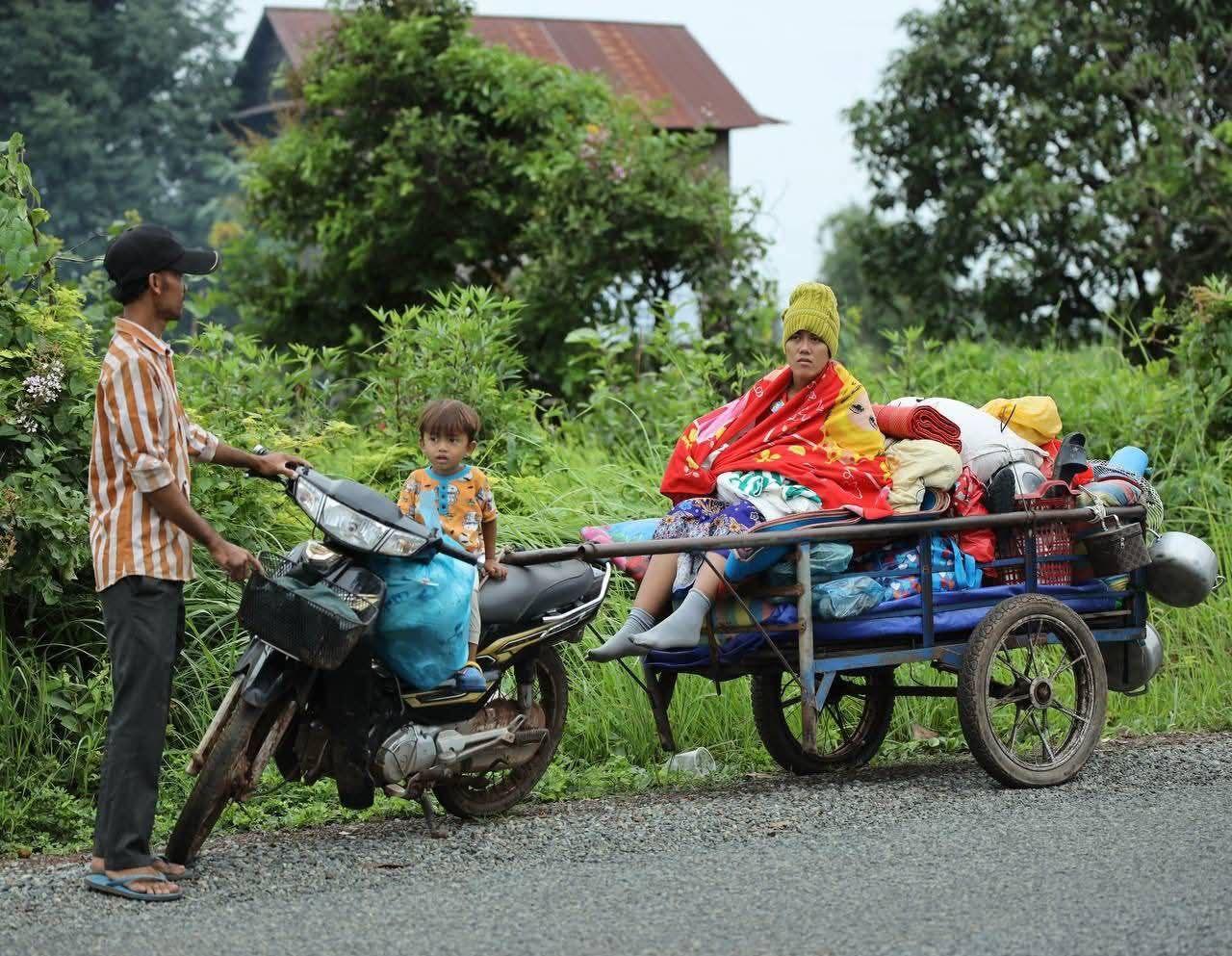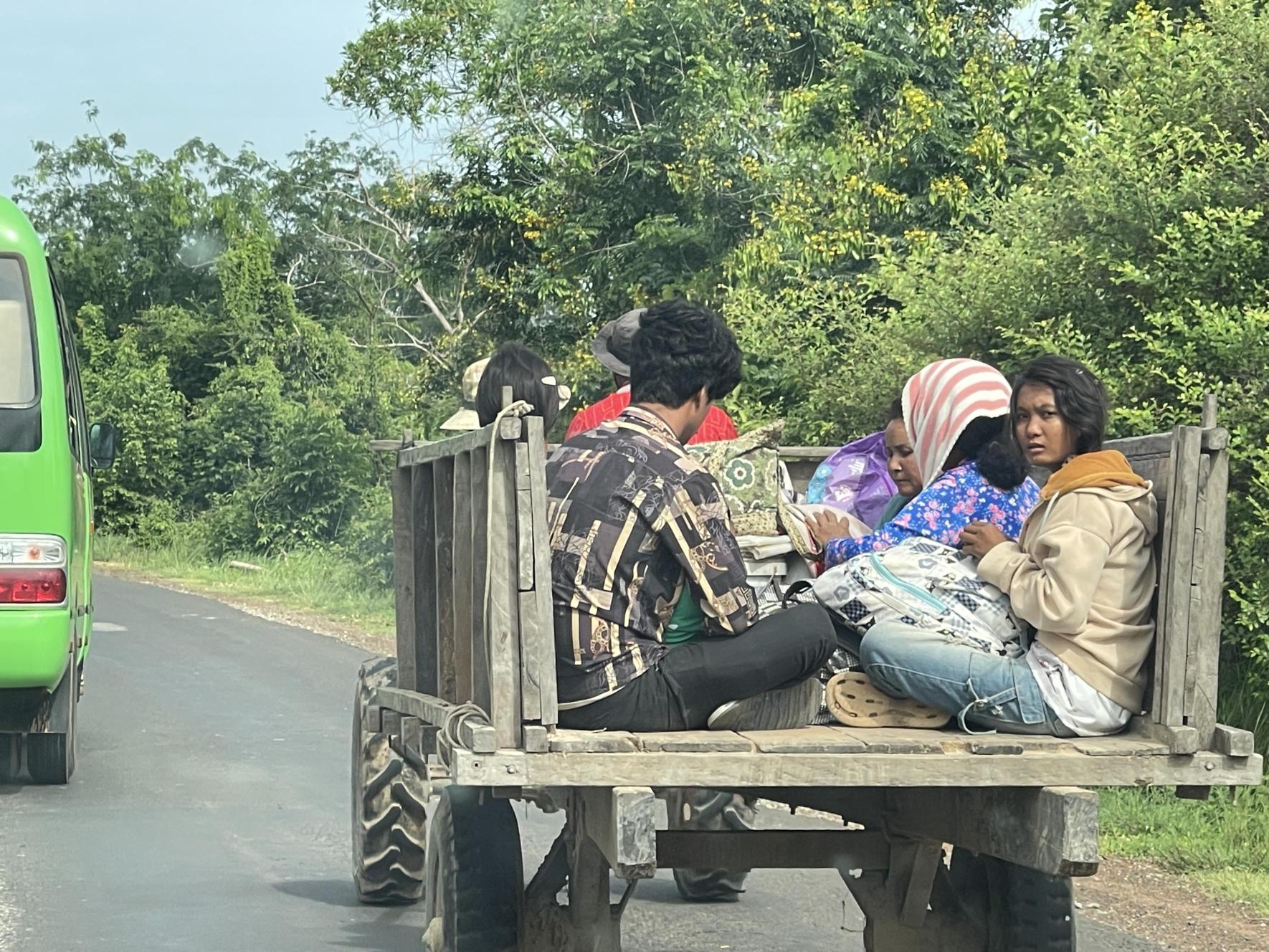“We Woke Up to Gunfire and Explosion, Not Thunder”: An eyewitness to the first day of the Cambodia–Thailand border conflict

Preah Vihear Province: “Boom boom”—the sound tore through the early morning silence of 24 July. I thought it was thunder. The skies were grey, heavy with clouds, and I went about my morning as usual, preparing for a youth club meeting in a commune 50 kilometres away. But the sound didn’t stop.
“Boom boom… bang bang”—it grew louder, closer. My heart felt uneasy. Memories of past clashes at the Thai–Cambodia border flashed back. I hoped, naively, that it was just a minor incident—something that would pass. I told myself it would be okay. I wasn’t afraid. I’ve been through conflict before. I was born in 1989, raised in Kulen District, Preah Vihear Province. I experienced civil war as a child—this was not new to me. But somehow, this time felt heavier. More frightening.
The fighting zone was just 15 minutes by motorbike from my office. Still, I didn’t cancel my plan. The youth were waiting. I needed to be there for them.
But as I travelled, everything changed.
Children from Choam Ksant Lower Secondary School were fleeing their classrooms in panic. I could hear gunfire echoing through the hills. Smoke billowed over the Dangrek Mountains—a sign this wasn’t going to end soon.

On the road, I saw chaos. Hundreds of families were escaping. Hand tractors, carts, and personal vehicles, cars and motorbikes jammed the road. I saw fathers clutching toddlers, mothers holding crying young babies. Fear was written across every face. And in the eyes of the children—there was confusion, helplessness, terror.
As I neared a military outpost, gunfire cracked overhead. I held my breath. My thoughts were no longer on meetings or plans—I was thinking about the children, their safety, and the urgency of this unfolding disaster.
I contacted my team. My supervisor advised me to head toward the provincial town for safety. The youth group I was meant to meet called—they’d been told by authorities that all non-essential gatherings must be cancelled. I agreed without hesitation. Lives come first.
Traffic was overwhelming. Residents near the border were desperately trying to flee. I kept receiving check-ins from our staff care team. My supervisor continued to share updates. Eventually, I was advised to return home—about 100 kilometres from the conflict zone, in a straight line.
When I reached home, I was physically safe—but emotionally, I was broken. My younger brother, sister, nieces, and nephew were there. We were together, but none of the adults could sleep. Gunfire echoed through the night. I lay in the dark, eyes shut, thoughts racing. Was I scared? Was I anxious? Probably both. I kept thinking of the families still out there—children under makeshift shelters, the elderly with nowhere to run.

I messaged some of the youth I had planned to meet. They hadn’t left their homes. They were scared and trapped in the air raid shelters, still listening to the gunfire.
The next morning, I joined my team’s meeting online. On the road, I saw more displaced families. Some I recognised—Registered Children and their relatives. I stopped to ask for their mothers’ contact numbers so I could check on their safety. I won’t forget my responsibility to follow up with them.
I’ve lived through three wars. But this… this is the one that broke me.
On the nights of 25 and 26 July, heavy rain fell. The sound of the rain briefly masked the gunfire. It brought some relief—but not rest. I lay awake, listening to the rain, praying the bullets wouldn’t reach us.
As a humanitarian worker, I’m trained to stay calm in crisis, to respond, to lead. But I’m also human. I cry silently when I see the blank stare of a child who’s lost their sense of safety. I feel helpless watching families flee with only a sack of rice and a crying baby in their arms.
This is what war looks like—not in official reports or headlines, but on the ground, in the eyes of civilians whose lives are shattered in an instant. Especially the children, whose childhood is replaced by fear and flight.
Our small corrugated-roof home became a refuge for relatives who fled from Choam Ksant to stay with us. On the second day, as the gunfire grew louder and more unpredictable, we decided to dig a shallow air-raid shelter behind the house, near the bamboo trees. We needed to be ready—to protect ourselves and those we love.
In the days that followed, I witnessed something that gave me hope—World Vision responded swiftly. Our teams on the ground worked tirelessly to mobilise and distribute emergency assistance to affected families, ensuring that children were cared for and protected. I felt deeply proud—not only of our work, but of the compassion and solidarity that define our mission. In the midst of crisis and uncertainty, we stood united, praying for peace and hoping that the affected families—especially the children—can soon return home and resume their daily lives.
By: World Vision Cambodia's Community Development Facilitator